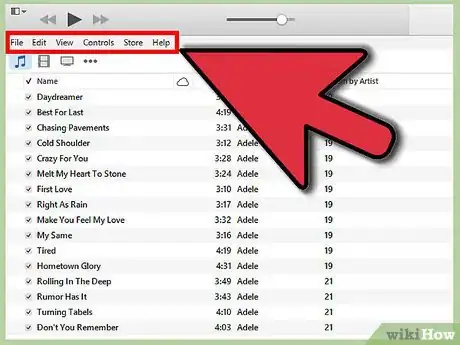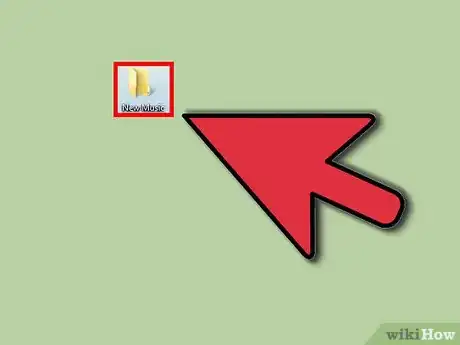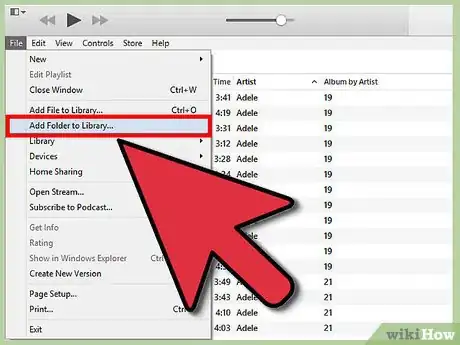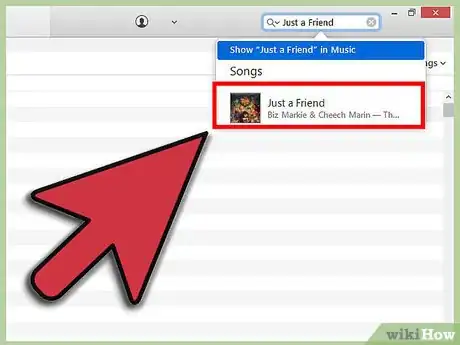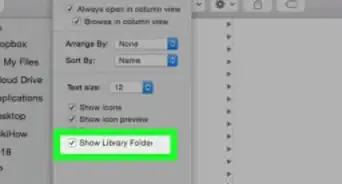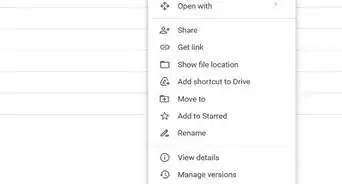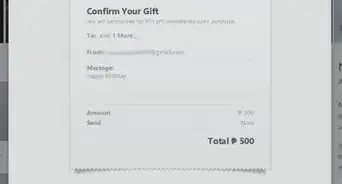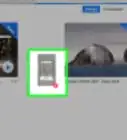X
wikiHow is a “wiki,” similar to Wikipedia, which means that many of our articles are co-written by multiple authors. To create this article, 14 people, some anonymous, worked to edit and improve it over time.
This article has been viewed 402,523 times.
Learn more...
Many people who use iTunes software to manage and play their music files choose to also have iTunes manage music files that they acquired through other software. ITunes has several options that allow users to add music to the iTunes library, including ripping CDs and importing music from other software. For music files that you can't add by these means, you can can add them to iTunes by adding a folder of music.
Steps
-
1Open iTunes and make the menu bar visible. Go into iTunes, and view your library under any of the music tabs (artists, albums, songs, it doesn’t matter). On the very top left of the screen, there is a small rectangular shape that is half filled in. Click this, and a drop-down menu should appear. Scroll towards the bottom on this drop-down menu, and select ‘Show Menu Bar’. As soon as you click this, the traditional menu with options ‘File’, ‘Edit’, ‘View’, ‘Controls’, ‘Store’, and ‘Help’ should appear near the top of the screen.
- If you can already see the menu bar, then skip this step.
-
2Find the music you want to add to iTunes. Whether you downloaded an mp3 from the internet or have music hidden in other files on your computer, you’ll need to find the folder that your music is in. Search your computer (outside of iTunes) and locate your music folder. Move this file folder to an easy-to-view location, such as on your desktop or in your downloads. This will make it easier to find, when you add the folder to iTunes later.Advertisement
-
3Check the file extensions to make sure they are compatible with iTunes. Most music can be added to iTunes with no problem, but you should double-check to make sure the file-extension used with your music is compatible.The music can have any of the following extensions: AAC, MP3, WAV, AIFF, AA or M4A. If you have unprotected WMA files, iTunes can convert them to a format it can use. Otherwise, you’ll have to convert your music to one of these forms before adding it to iTunes.
-
4Add the new folder to iTunes. Click the "File" menu. Mac users will see the option "Add to Library," while PC users will see "Add Folder to Library". Click whichever of these options appears for you, and allow iTunes to open a browsing window.
- There is also the option to ‘Add File to Library’, but this will only add a single song, rather than an entire folder of songs, to your iTunes.
-
5Browse for the folder you created. In the newly opened window, search for the file folder with your music that you placed earlier. Click to highlight it, then click "Select Folder" at the bottom of the window.
- If you use the ‘Add File to Library’ option, you can hold the shift-key to select multiple items, and effectively copy an entire folder of music to your library.
-
6Look for the folder to be added to iTunes library. Once you click ‘Select Folder’, the browsing window should close automatically, and you’ll be viewing your library again. Wait 5–10 seconds, and then search your library for the folder of music you just added. It takes a little time to copy over, so if it doesn’t show immediately, be patient. Once you’ve located the folder, test the music to make sure they copied without a hitch. If they did, you’re done![1]
Advertisement
Community Q&A
-
QuestionDoes this work for MP4 files?
 Community AnswerYes, it does.
Community AnswerYes, it does. -
QuestionWhat do I do if my iTunes copies to a folde, but does not show it anywhere?
 Community AnswerConsider using the "Add File" option and choosing all the folder contents.
Community AnswerConsider using the "Add File" option and choosing all the folder contents.
Advertisement
Warnings
- Moving, cutting and pasting files are somewhat different for Mac users. Mac normally doesn't allow cutting and pasting because of there is a risk you will forget to paste a file, which can result in losing it. Use the "Cmd" key if you want to cut and paste rather than copy a file.⧼thumbs_response⧽
Advertisement
About This Article
Advertisement
